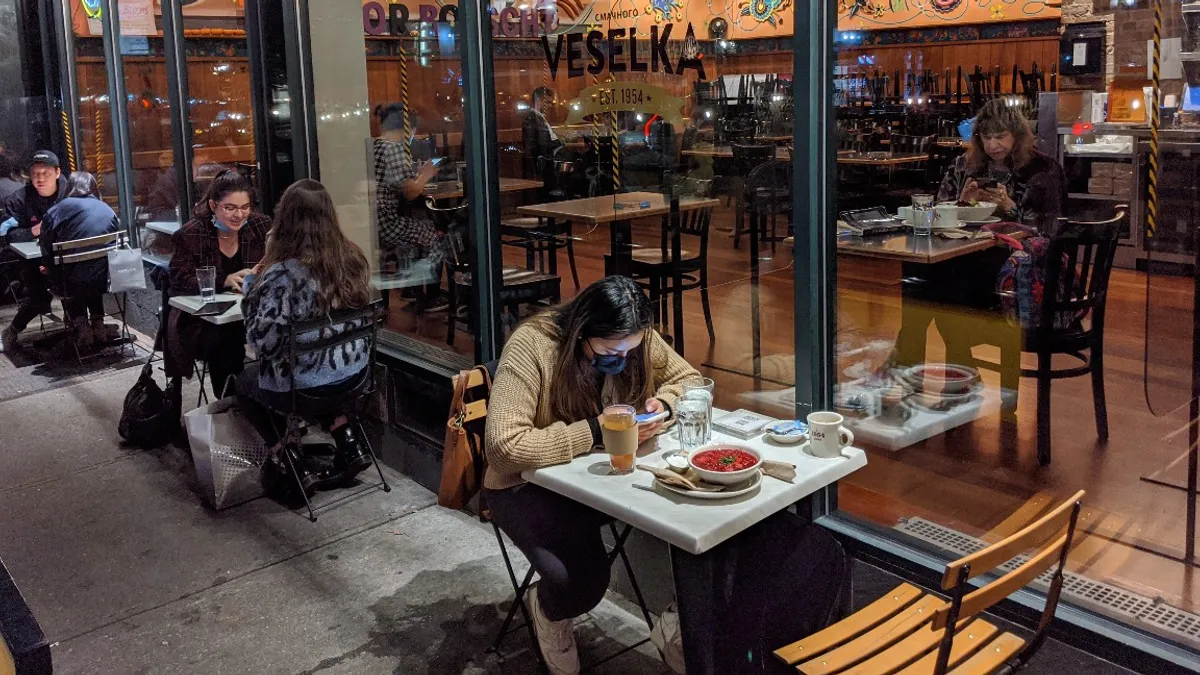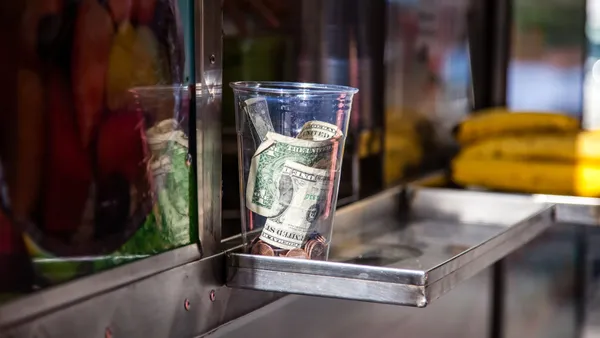Dive Brief:
- New research from Stanford University and Northwestern University found that the reopening of restaurants, gyms and hotels correlated with higher cases of COVID-19. The researchers used mobile phone data from 98 million people to model risks at different locations between March and May. Researchers then combined that information with the number of cases to create infection models.
- The study, reported by Bloomberg and published this week in Nature, also found that about 10% of "points-of-interest" locations studied accounted for 85% of predicted infections.
- The models also suggest that complete lockdowns aren't necessary to control the virus, and that masks, social distancing measures and reduced capacity all work. For example, during a test in May, the researchers capped occupancy rates at 20% in specific Chicago POI locations, which cut down on the number of new infections by more than 80%.
Dive Insight:
The study indicates that lower occupancy rates led to a 42% loss of restaurant patrons overall, leading researchers to suggest that dramatically reducing maximum occupancy numbers could be more effective than complete lockdowns or other less targeted measures. However, that 42% loss of restaurant patrons is a huge deal for establishments running on wafer-thin margins, and a number of restaurants have been adamant that reduced occupancy rates are unsustainable.
However, for operators, the challenge of this research is identification of restaurants as a risky POI location, compounding previous research findings. In September, a report from the Centers for Disease Control and Prevention found that adults who tested positive for COVID-19 were approximately twice as likely to have reported dining at a restaurant in the two weeks before becoming sick. JP Morgan published a similar report in June, attributing higher restaurant spending to a faster spread of COVID-19.
But Stanford and Northwestern's findings could lead to some more effective solutions for restaurants. One researcher noted that the data offers the ability to test different reopening scenarios — which is likely welcome news for markets like Chicago that shut down indoor dining for a second time — and operators who believe some capacity is better than no capacity.
Policymakers could leverage this data for more targeted mitigation efforts. New York City, for example, is implementing disparate regulations based on case rates in neighborhoods and boroughs, but the "Cluster Action Plan" has been confusing in practice for some restaurant operators.
Though all restaurants, along with gyms, hotels and religious organizations, produced the largest predicted increases in infections when reopening, the report notes, "reopening full-service restaurants was particularly risky." In the Chicago test, for example, researchers predicted an additional 596,000 infections by the end of May, which was more than triple the next riskiest point-of-interest category, fitness centers. This category is more dangerous because restaurants tend to have higher visit densities and longer visitor stays. Restaurants didn't contribute less to predicted infections until they were under lockdown orders, the study showed.
In other words, there may not be a single solution to COVID-19 spread at restaurants. Complete shutdowns will lead to closures. Reduced capacity could lead to closures, too. And higher capacity or full reopenings could lead to spikes in cases. Restaurants and policymakers alike have been grappling with all of these scenarios for months, and there's no end in sight.













